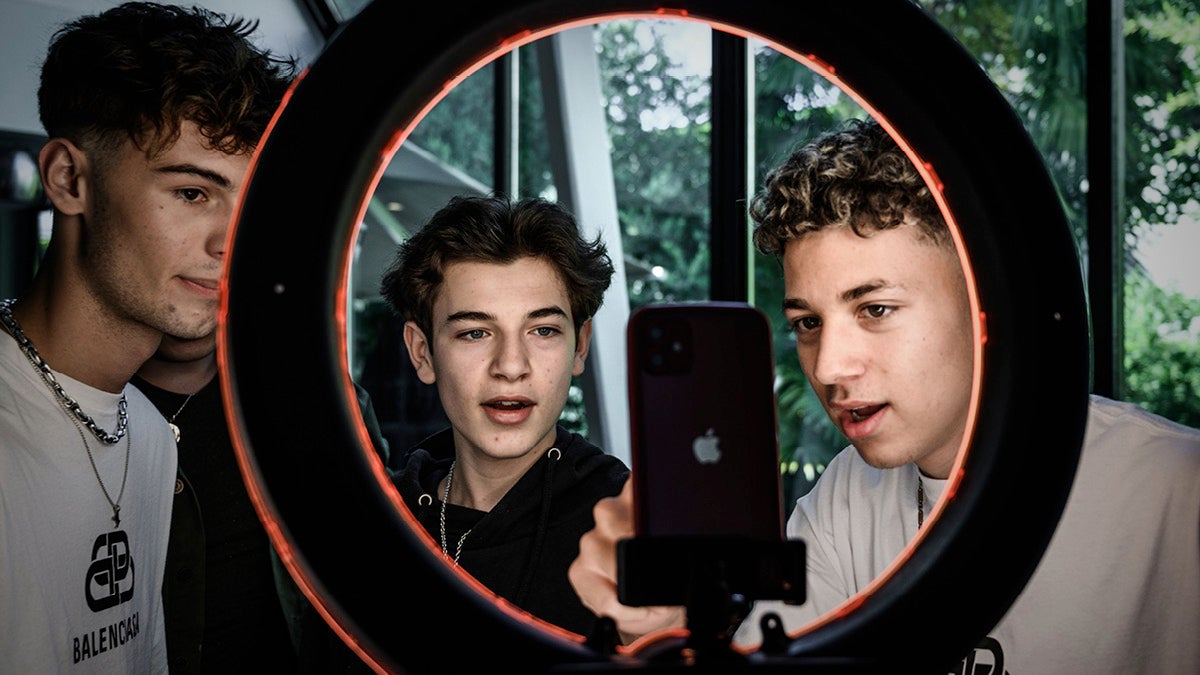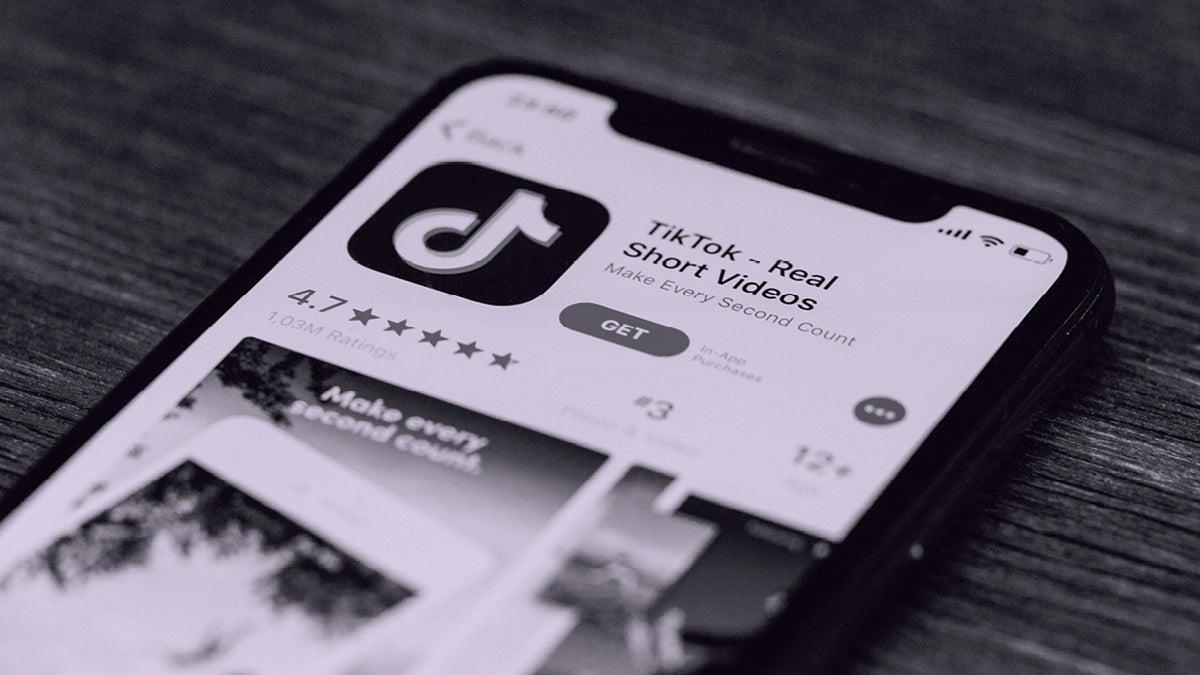
It’s the sixth most-used app on the planet and high on the agenda for marketers worldwide as it continues to be one of the hottest social destinations. But TikTok’s potential for brands to build mass awareness and reach new audiences is only just beginning to be understood.
Known for its predominantly Generation-Z user base with 800 million global monthly active users, TikTok’s explosion onto the world stage has been profound, especially over recent months as whole nations went into lockdown and teenagers went in search of entertainment to pass the time.
The app, available across 149 countries and regions and in 39 languages, allows users to create and share three sixty-second videos on topics ranging from music and lip-synced dance routines to geopolitical news and current affairs. But if you thought it was just another social platform made for under-18s, think again.
In December 2019 alone, 9 per cent of UK smartphone users aged 25 to 34 were on TikTok, compared with 8 per cent of those aged 35 to 44 and 5 per cent of phone users aged 45 to 54, according to WARC estimates. Accordingly, celebrities, influencers and household names are all getting in on the act as the desperation for brands and individuals to go viral continues to gather momentum.
What makes TikTok unique?
But it’s the app’s content-centric model that sets it apart from the competition. Unlike Instagram or YouTube, the content, not a channel’s following, reigns supreme, which means accounts with just a few likes or “hearts” still have the potential to reach millions of eyeballs.
The Washington Post’s channel, for example, which provides a light-hearted, behind-the-scenes look at how the publication is made, has amassed nearly 600,000 followers and 25 million likes since launching in May 2019, as it attempts to reach a younger, more global demographic.
“‘Don’t make ads, make TikToks’ isn’t just our proposition to marketers; it’s something we believe in passionately,” says Stuart Flint, head of business solutions for Europe at TikTok. “We think there is a clear opportunity for brands to tell important stories on our platform, to create a depth of what they can share, what they believe and to connect with the community, but to do so in a way that is truly TikTok.”
The platform offers a variety of advertising options, from in-feed and takeover ads to branded video filters and the ever-popular hashtag challenge ads, where companies invite all users to create content around their campaign theme, with all user-generated content (UGC) aggregating in the central page.
Connecting with users in brand new ways
And it is this UGC model where TikTok’s true potential lies. According to Salesforce, social campaigns that have some element of UGC achieve a 50 per cent increase in engagement, while ads with significant UGC generate five times higher click-through rates.
“In a very dynamic media landscape, we are constantly looking to address the right target group and nurture our target group of the future,” says Wim Van Bogaert, manager of digital marketing at BMW, which doesn’t yet have a central TikTok channel, but is looking to integrate the platform into its overall strategy in the future.
“With TikTok showing the most year-on-year growth [compared with other platforms] of above 30 per cent, an audience of above 800 million and growing, as well as recording the longest amount of time per day on a social platform, we would only deny TikTok at our own peril. We’re witnessing the coming of age of TikTok.”
Last year, BMW launched a dance campaign on social channels under the #THE1challenge hashtag, whereby users were tasked with performing a choreographed dance “inspired by the new BMW 1 Series”, which on TikTok generated 1.4 million likes, 7,400 comments and 7.1 million views, outperforming Instagram.
“If we do not bond with this younger target group who are at the brink of owning a driver’s licence and spend an average 53 minutes per day on TikTok, when will be the right time?,” asks BMW’s Van Bogaert. “The female ratio is between 60 and 70 per cent and this is very important. The majority are using high-end smartphones, an indication of the purchasing power of the audience which is on TikTok.”
Creating the next generation of brand ambassador
For Chipotle’s latest TikTok marketing campaign, #ChipotleSponsorMe on Cinco de Mayo 2020, it teamed up with influencer and brand superfan David Dobrik to challenge creators to showcase why they should be sponsored by Chipotle. The campaign was inspired by the influx of fans who were requesting Chipotle sponsorships across social. Tressie Lieberman, vice president of digital and off-premise at the American chain of fast food restaurants, explains: “TikTok creators jumped at the opportunity to share new original content that proved their undeniable love for Chipotle’s real food.
“We worked with David to pick five winners who became the first Chipotle fans to receive the famed Celebrity Card, which is normally reserved for a small, elite group of brand superfans who are celebrities, athletes and influencers, and grants access to free Chipotle. The campaign generated 1.2 billion total views on TikTok.”
How Nike capitalised on a more even playing field
UK-based 22-year-old Ben Black, a Nike football ambassador with 2.3 million followers on TikTok alone, was an early adopter of the platform. As one of the first football creators publishing content on Musical.ly, he witnessed the platform evolving first-hand. “Anybody on the platform has the opportunity to be seen. On any other platform it can be quite hard to get exposure. On TikTok it’s a more even playing field,” says Black.
He works alongside Nike, its agency and TikTok, and has earned their trust leading him to have creative control and steer activity and campaigns, including Nike’s #MagicBoots, which challenges users to show off their soccer skills to win a pair of boots. “Take inspiration from some of the finest #nikefootball players in the game and show us what you’ve got. And if you impress our baller, @ben, you could even win a very special pair of #MagicBoots,” according to the central campaign page.
Anybody on the platform has the opportunity to be seen… It’s a more even playing field
TikTok’s Flint explains how the amplification with advertising works with the brand and creator Black, praising the strength of collaboration. “Nike was able to leverage his large following in a key target demographic to generate huge organic reach right from the start. To maximise reach, Nike ran additional topview-lite and in-feed ads, as part of a wider advertising campaign. On TikTok, #MagicBoots saw more than one billion video views.”
The success has led Black to travel the world to work with football superstars Kevin de Bruyne, Neymar and Cristiano Ronaldo, directing, editing and publishing content. “It just feels like TikTok have nailed it. The trends and the use of audio makes it easier for people to get involved. These are probably the two things that make it so unique,” adds Black.
Major worries over TikTok security
But the breakneck speed of TikTok’s world domination is not without its challenges, with privacy and national security among the top concerns of some governments as geopolitical manoeuvring attempts to stall its rapid growth.
Owned by Chinese multinational ByteDance, TikTok started life as Douyin in 2016, but rapidly became more popular on a global scale after acquiring and merging with lip-sync app Musical.ly in 2018. But as its audience continues to swell, many, such as Donald Trump, are now worried the platform could be amassing data on American citizens to pass to the Chinese government, something ByteDance denies.
In August, the US president ordered ByteDance to sell TikTok’s US operations before the middle of September or face a nationwide ban, with Microsoft, Twitter and Oracle among the leading contenders to take over the unit.
TikTok, which boasts 80 million active users in the United States, is fighting its corner and taking legal action against the Trump administration to challenge the accusations levelled at it. Meanwhile, India banned the app in June, citing security and privacy concerns.
What is the future for TikTok?
The unfolding TikTok story is just as entertaining as the content published across its platform. From the economic, geopolitical and everything in-between, it’s attracting controversy and interest. Its potential new owners may be able to sidestep the political issues currently plaguing it, in addition to the challenges of privacy, spam and inappropriate content that will inevitably follow. Like other platforms, transparency and trust will be critical to its future success.
With competition from Instagram’s newly launched Reels product, and more copycats expected to follow, President Trump creating an account on competitor Triller, and a dozen other similar platforms wanting to replicate TikTok’s success, how solid is its future? There is a potentially complex road ahead. But achieving huge Western adoption where one-stop Chinese technology powerhouse WeChat failed, it is tempting to surmise more success awaits. ByteDance itself reportedly estimates annual revenues will surge to $6 billion by the end of 2021, up from $1 billion this year.
With its growth, investment, reach, virality and ability to evolve quickly, it’s impressive. Announcements such as its newly launched Creator Funds aren’t hurting either, whereby TikTok is investing billions in supporting “creators of all sizes and backgrounds through earnings that reward the passion and dedication they put into inspiring, uplifting and entertaining the TikTok community”.
TikTokers are unapologetically loyal and they are the audience defining its future. What’s apparent is the interest brands have in TikTok marketing, the TikTok creator ecosystem and its audience. These don’t appear to be going anywhere else any time soon.
TikTok marketing for B2B

TikTok For Business is supposedly for brands targeting both business-to-business (B2B) or business-to-consumer (B2C) audiences. “TikTok is where creativity can be unleashed. Modern customers for both want the fundamentally same thing out of brand interactions: entertaining, inspiring or informative experiences improving their lives,” says TikTok’s Stuart Flint.
But catering for both B2B and B2C campaigns has been a struggle for most social media platforms and TikTok isn’t immune. Some specialists aren’t convinced the platform is right for B2B brands or campaigns just yet.
“If B2B brands need to be on TikTok, then it should be for recruitment purposes showcasing the brand and have people apply,” advises Timothy Armoo, chief executive at influencer marketing agency Fanbytes.
The Association of Chartered Certified Accountants (ACCA), established in 1904, successfully worked with two creators with the support of Fanbytes to produce content for TikTok and Snapchat to reach new recruits, which was essentially a B2C play for a B2B organisation.
“We worked with two influencers [James Owen and Sherice Banton] who visited accountancy firms, Flinder and Peter Jarman who had the right following, not just a sizeable following. The content showed off ACCA and student accountants redefining the profession, abolishing the stereotype that accountants are boring by creating organic TikToks,” explains Karen Smith, head of UK marketing, at ACCA.
The activity generated 890,800 views, 182,900 likes, 1,069 comments and an average engagement on TikTok of 13.6 per cent, according to the ACCA. “There was a lot of research and a lot of dialogue to ensure there wasn’t anything that would jar with our brand and placing trust in the influencers we’d chosen, given the live aspect of the content created,” Smith adds.

It’s the sixth most-used app on the planet and high on the agenda for marketers worldwide as it continues to be one of the hottest social destinations. But TikTok’s potential for brands to build mass awareness and reach new audiences is only just beginning to be understood.





